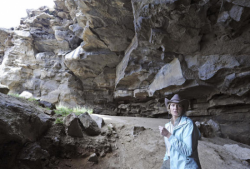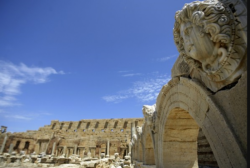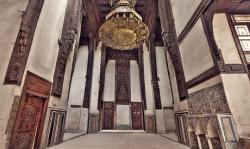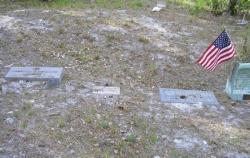- 16 JUIN
- INDI-UNI : 
PRE-INSCRIPTION : 15 Juin – 15 Août
PRE-REGISTRATION: June 15th - August 15th
- ALGERIE – Ténès - Une découverte archéologique a été faite inopinément au port de Ténès. En effet, des travailleurs d’une entreprise de dragage de cette infrastructure ont été surpris par la découverte de pièces archéologiques au fond du bassin. Il s’agit de pierres sculptées en statues de femmes, dont on ignore l’époque et les origines. Ce qui est sûr est que ces pierres datent d’une époque ancienne, à l’image des autres vestiges mis au jour dans la ville antique de Ténès. Les pierres ont été récupérées et remises aux services du port. Celles-ci s’interrogent notamment sur la présence de ces pièces historiques dans le bassin du port et la nature du traitement qui leur sera consacré par les services concernés.
http://www.elwatan.com/epoque/on-vous-le-dit-16-06-2011-128931_116.php
- USA –  – Idaho Caves - A few miles west of Idaho Falls lie three caves and an archaeological legacy that Suzann Henrikson can't let go. The U.S. Bureau of Land Management archaeologist has dedicated years of her life to convincing others that digging in the caves for clues of the Snake River Plain's earliest inhabitants is worth the money. Henrikson and her peers say the Wasden caves, named for the first white owner of the land, make up the oldest archaeological site in Idaho. Excavators have found bones from all types of animals in the caves, as small as mice and large as a mammoth, as well as prehistoric spear and arrow points and fragments of pottery. Henrikson suspects Native American tribes — the ancestors of today's Shoshone-Bannock Tribes — sometimes used the caves to trap and kill large game such as bison and mammoths as many as 11,000 years ago. As the theory goes, hunters would drive herds of bison from the area north of the caves up a slope and into the gaping holes formed in collapsed lava tubes. The holes weren't deep enough to kill many of the animals, so they didn't qualify as the kind of buffalo jumps other plains tribes used to harvest game. But they did trap large numbers of the bison in a confined area where the hunters could easily dispatch them. Henrikson said bison kills at the Wasden site could date back as far as 9,000 years. If those kills were the result of intentional drives by hunters, they'd mark the oldest such site in North America, she said. Of course, that's just theory at this point. No serious excavation has taken place at the Wasden site since the 1970s, and archaeologists need to examine the caves more thoroughly to confirm — or debunk — their theories. To dig, they need money — about $10,000 per cubic yard, Henrikson said.
– Idaho Caves - A few miles west of Idaho Falls lie three caves and an archaeological legacy that Suzann Henrikson can't let go. The U.S. Bureau of Land Management archaeologist has dedicated years of her life to convincing others that digging in the caves for clues of the Snake River Plain's earliest inhabitants is worth the money. Henrikson and her peers say the Wasden caves, named for the first white owner of the land, make up the oldest archaeological site in Idaho. Excavators have found bones from all types of animals in the caves, as small as mice and large as a mammoth, as well as prehistoric spear and arrow points and fragments of pottery. Henrikson suspects Native American tribes — the ancestors of today's Shoshone-Bannock Tribes — sometimes used the caves to trap and kill large game such as bison and mammoths as many as 11,000 years ago. As the theory goes, hunters would drive herds of bison from the area north of the caves up a slope and into the gaping holes formed in collapsed lava tubes. The holes weren't deep enough to kill many of the animals, so they didn't qualify as the kind of buffalo jumps other plains tribes used to harvest game. But they did trap large numbers of the bison in a confined area where the hunters could easily dispatch them. Henrikson said bison kills at the Wasden site could date back as far as 9,000 years. If those kills were the result of intentional drives by hunters, they'd mark the oldest such site in North America, she said. Of course, that's just theory at this point. No serious excavation has taken place at the Wasden site since the 1970s, and archaeologists need to examine the caves more thoroughly to confirm — or debunk — their theories. To dig, they need money — about $10,000 per cubic yard, Henrikson said.
http://www.deseretnews.com/article/700144270/Scientist-fights-for-research-at-Idaho-caves.html
- LIBYE –  Leptis Magna - Leptis Magna, Libya’s most important archaeological site, has not been engulfed in fighting as the country’s conflict enters its fifth month. But airstrikes have been carried out nearby, and Libyans on both sides of the battle worry that the U.N. World Heritage Site could sustain damage if rebels in the east push toward Tripoli. Alarm about the archaeological site soared this week after NATO officials said they could not rule out bombing in the area if Gaddafi’s troops are found to be using it as a military staging ground. Susan Kane, a professor of archaeology at Oberlin College in Ohio who has done extensive work in Libya, said Libyan contacts she deems credible have told her the government is storing munitions in cultural sites, such as museums and ruins. She said that fighting around Leptis Magna would be a tragedy.
Leptis Magna - Leptis Magna, Libya’s most important archaeological site, has not been engulfed in fighting as the country’s conflict enters its fifth month. But airstrikes have been carried out nearby, and Libyans on both sides of the battle worry that the U.N. World Heritage Site could sustain damage if rebels in the east push toward Tripoli. Alarm about the archaeological site soared this week after NATO officials said they could not rule out bombing in the area if Gaddafi’s troops are found to be using it as a military staging ground. Susan Kane, a professor of archaeology at Oberlin College in Ohio who has done extensive work in Libya, said Libyan contacts she deems credible have told her the government is storing munitions in cultural sites, such as museums and ruins. She said that fighting around Leptis Magna would be a tragedy.
http://www.washingtonpost.com/world/middle-east/fear-for-libyas-roman-ruins/2011/06/15/AGlDYTWH_story.html
- ROYAUME UNI – Walton Basin - WHAT look like just a few fields close to Presteigne, in fact cover up an ‘exceptional’ and significant historical site which maps around 5,000 years of Welsh history. The Walton Basin has been an area of interest to Clwyd-Powys Archaeological Trust (CPAT), who have been carrying out significant excavation work over the last few years to try and uncover the wonders of Welsh history. One of their earliest findings is from the Neolithic period, where archaeologists believe they have found something that could be as significant as the word famous Stonehenge, on the Salisbury plains. Chris Martin, regional architect at CPAT, explained that what has been found in the Walton Basin is thought to be a rare Neolithic 'causewayed' enclosure. Having used some 1,400 mature oak trees in its construction, which has been dated to around 2700 BC, to date this is the largest Neolithic enclosure in Britain, making its finding quite significant. “We don’t actually know what it is for. It seems to be some kind of ceremonial enclosure that was significant to the local population, a religious structure, a meeting place for the community.”
http://www.countytimes.co.uk/news/103422/neolithic-henge-in-radnorshire-s-walton-basin.aspx
- EGYPTE –  Le Caire - In cooperation with UNESCO, the Ministry of State for Antiquities (MSA) is to transform the Zeinab Khatoun house into the headquarters for the Cairo Urban Rehabilitation Project.Mohamed El-Sheika, head of the project department at MSA, told Ahram Online that the project aims to draw an archaeological map for Old Cairo, and provide the means to rehabilitate modern homes to make them harmonious with the area's archaeology.The house is one of the most remarkable Mameluke houses, and was named after its last owner. It occupies a distinguished location behind Al-Azhar mosque in Atfet El-Azhary (Azhary alley) in Darb Al-Ahmar district, once the finest and wealthiest neighborhood in Islamic Cairo. Across from it is Al-Ayni Mosque and, at a nearby distance, two other important houses, Beit El-Harrawi and Beit Al-Sitt Wasila. It is difficult to pin down the exact date in which this house was built, but from the architectural style and decorations it is believed to have been built during the reign of Memeluke Sultan Qaitbay at the end of the 14th Century. It was restored during the 18th century, a restoration that gave it an Ottoman style.
Le Caire - In cooperation with UNESCO, the Ministry of State for Antiquities (MSA) is to transform the Zeinab Khatoun house into the headquarters for the Cairo Urban Rehabilitation Project.Mohamed El-Sheika, head of the project department at MSA, told Ahram Online that the project aims to draw an archaeological map for Old Cairo, and provide the means to rehabilitate modern homes to make them harmonious with the area's archaeology.The house is one of the most remarkable Mameluke houses, and was named after its last owner. It occupies a distinguished location behind Al-Azhar mosque in Atfet El-Azhary (Azhary alley) in Darb Al-Ahmar district, once the finest and wealthiest neighborhood in Islamic Cairo. Across from it is Al-Ayni Mosque and, at a nearby distance, two other important houses, Beit El-Harrawi and Beit Al-Sitt Wasila. It is difficult to pin down the exact date in which this house was built, but from the architectural style and decorations it is believed to have been built during the reign of Memeluke Sultan Qaitbay at the end of the 14th Century. It was restored during the 18th century, a restoration that gave it an Ottoman style.
http://english.ahram.org.eg/~/NewsContent/9/43/14422/Heritage/Islamic/Beit-Zeinab-Khatoun-HQ-for-Cairo-Urban-Rehabilitat.aspx
- USA –  Naples - Shortly after the southern Homestead Act began encouraging Americans to rebuild the south, a pioneer settlement called The Little Marco Settlement appeared between Naples and Marco Island. Located along the banks of Henderson Creek and Hall Bay, from Shell Island to Little Marco Island, dozens of homesteads formed this waterfront community in the 1880s, pre-dating the City of Naples. People primarily made a living off the richness of the estuary: Catching fish, harvesting shellfish, and also growing small plots of winter vegetables. As in many rural communities, these islanders laid their loved ones to rest on high ground on the mainland near what is now known as Shell Island Road. This historic cemetery is one of the unique cultural resources of the Rookery Bay National Estuarine Research Reserve. The cemetery rests many of the Kirkland family pioneering ancestors, and several descendants still reside in the area today. Modest shell tabby slabs with no identification marks designate some of the older graves that possibly date to the early 1880s. The earliest marked graves reflect dates in the early 1900s. According to the Florida Public Archaeology Network (FPAN), historic cemeteries have long been among Florida’s most neglected historic resources. Until recently, there was no way of knowing what was buried under ground without digging, which, in some cases, can unintentionally destroy precious resources. Now, Ground Penetrating Radar (GPR) is one of the best tools available to investigate and document these resources. GPR is a “groundbreaking” new technology that provides a three-dimensional picture of sedimentary layers. When combined with other archaeological and historical research techniques, GPR images can provide researchers with a better understanding of what may be concealed beneath the ground. Similar to weather-tracking radar, buried items are revealed by color patterns on a computer monitor. The elapsed time between when the signal is transmitted, reflected from buried materials or sediment and soil changes in the ground, and then received back at the surface is measured to help identify what lies beneath. In 2011, Rookery Bay resource managers, working with the Kirkland family, asked FPAN for help with the cemetery project. Using GPR, the process of delineating these historic cemetery boundaries and identifying any additional grave sites that were not previously recorded and marked will get underway.
Naples - Shortly after the southern Homestead Act began encouraging Americans to rebuild the south, a pioneer settlement called The Little Marco Settlement appeared between Naples and Marco Island. Located along the banks of Henderson Creek and Hall Bay, from Shell Island to Little Marco Island, dozens of homesteads formed this waterfront community in the 1880s, pre-dating the City of Naples. People primarily made a living off the richness of the estuary: Catching fish, harvesting shellfish, and also growing small plots of winter vegetables. As in many rural communities, these islanders laid their loved ones to rest on high ground on the mainland near what is now known as Shell Island Road. This historic cemetery is one of the unique cultural resources of the Rookery Bay National Estuarine Research Reserve. The cemetery rests many of the Kirkland family pioneering ancestors, and several descendants still reside in the area today. Modest shell tabby slabs with no identification marks designate some of the older graves that possibly date to the early 1880s. The earliest marked graves reflect dates in the early 1900s. According to the Florida Public Archaeology Network (FPAN), historic cemeteries have long been among Florida’s most neglected historic resources. Until recently, there was no way of knowing what was buried under ground without digging, which, in some cases, can unintentionally destroy precious resources. Now, Ground Penetrating Radar (GPR) is one of the best tools available to investigate and document these resources. GPR is a “groundbreaking” new technology that provides a three-dimensional picture of sedimentary layers. When combined with other archaeological and historical research techniques, GPR images can provide researchers with a better understanding of what may be concealed beneath the ground. Similar to weather-tracking radar, buried items are revealed by color patterns on a computer monitor. The elapsed time between when the signal is transmitted, reflected from buried materials or sediment and soil changes in the ground, and then received back at the surface is measured to help identify what lies beneath. In 2011, Rookery Bay resource managers, working with the Kirkland family, asked FPAN for help with the cemetery project. Using GPR, the process of delineating these historic cemetery boundaries and identifying any additional grave sites that were not previously recorded and marked will get underway.
http://www.marconews.com/news/2011/jun/16/volunteers-sought-historic-cemetery-research/